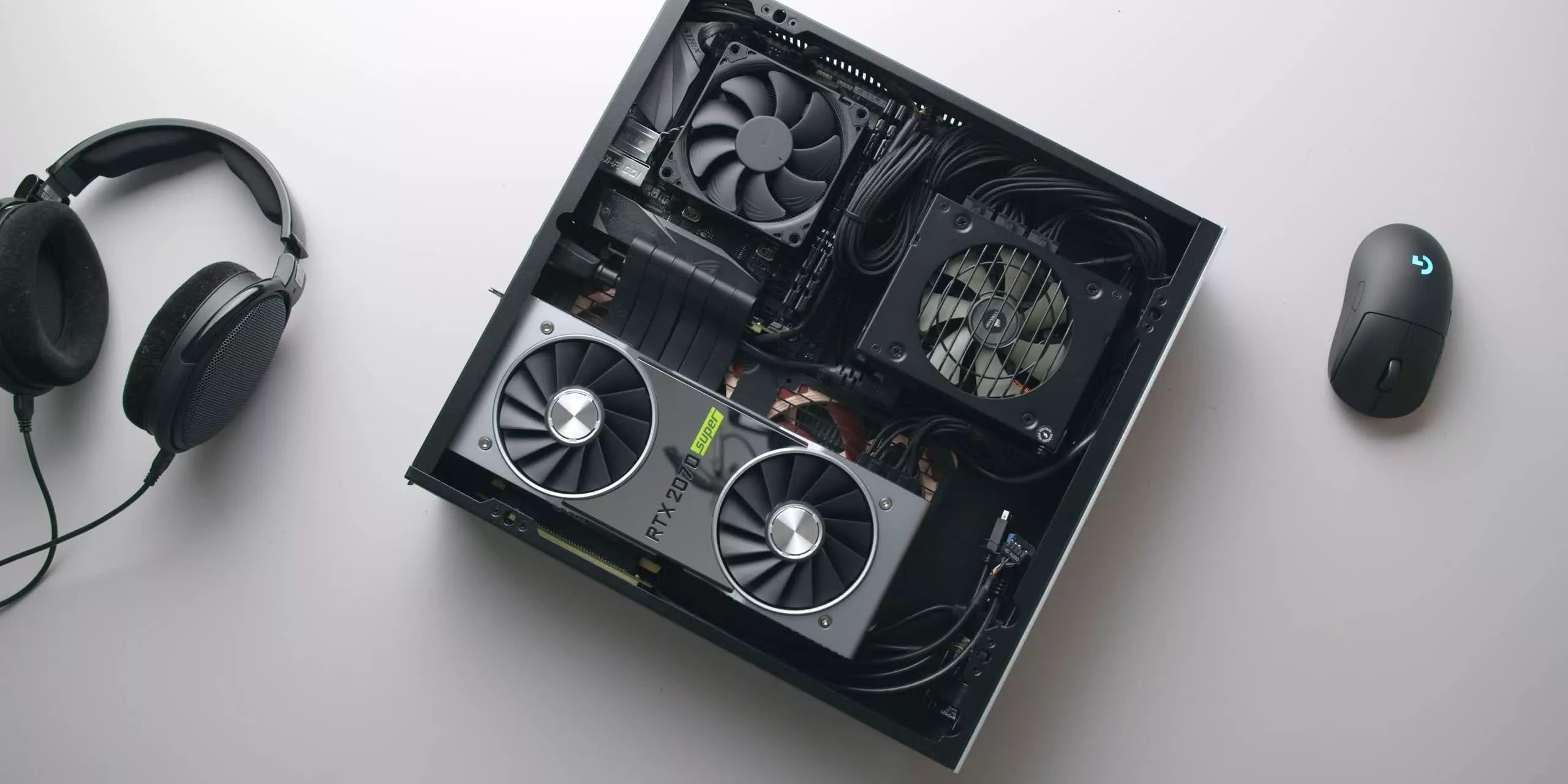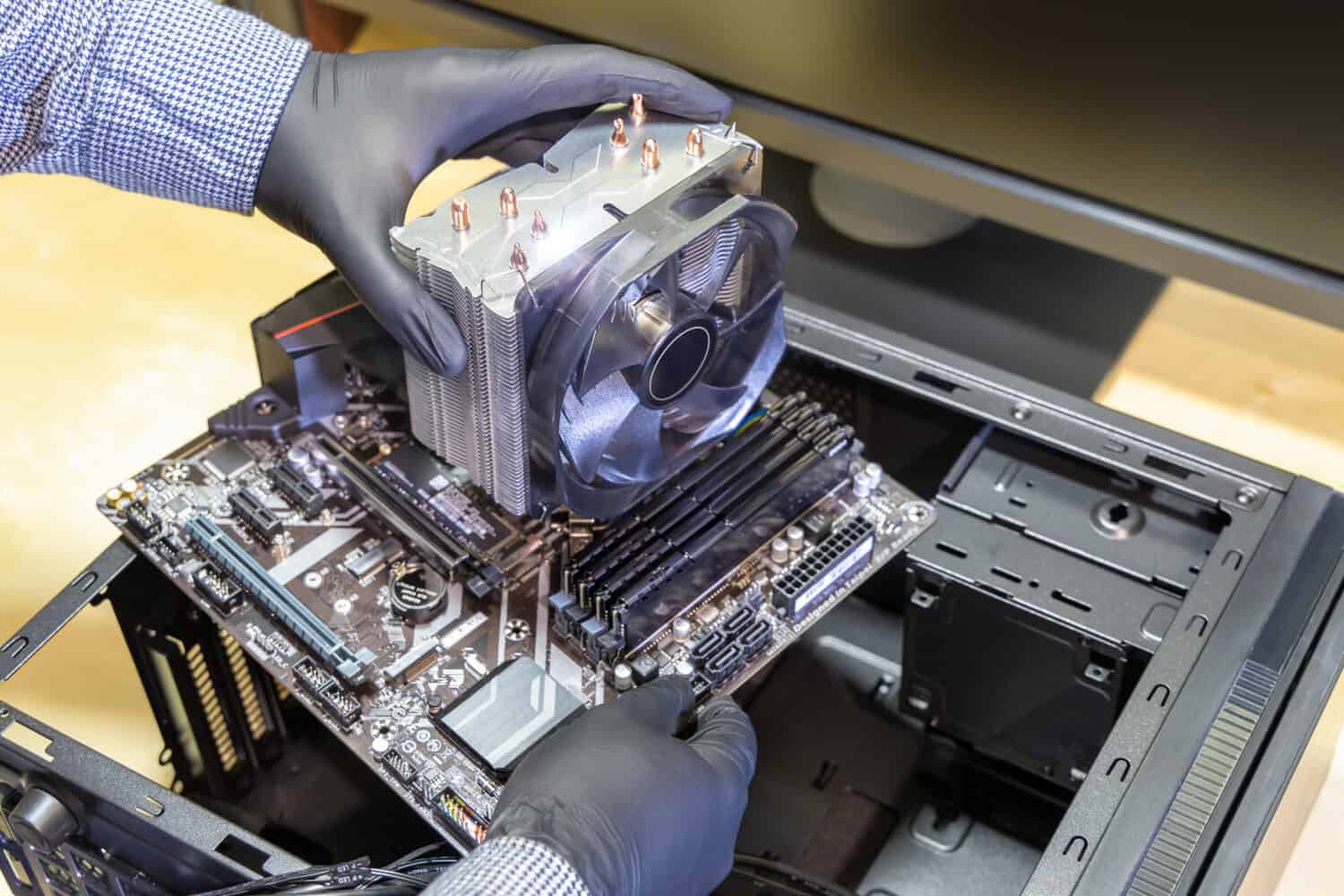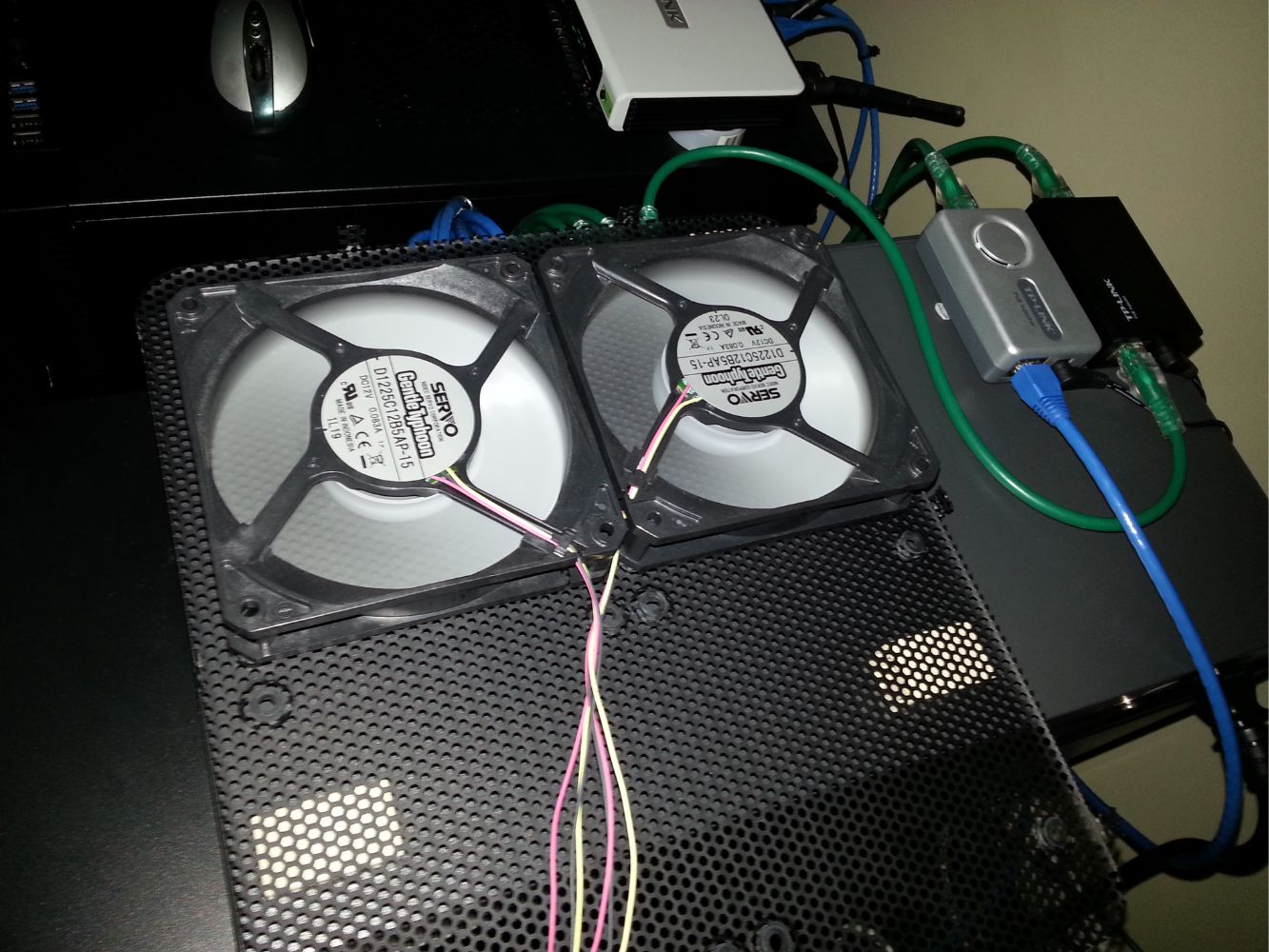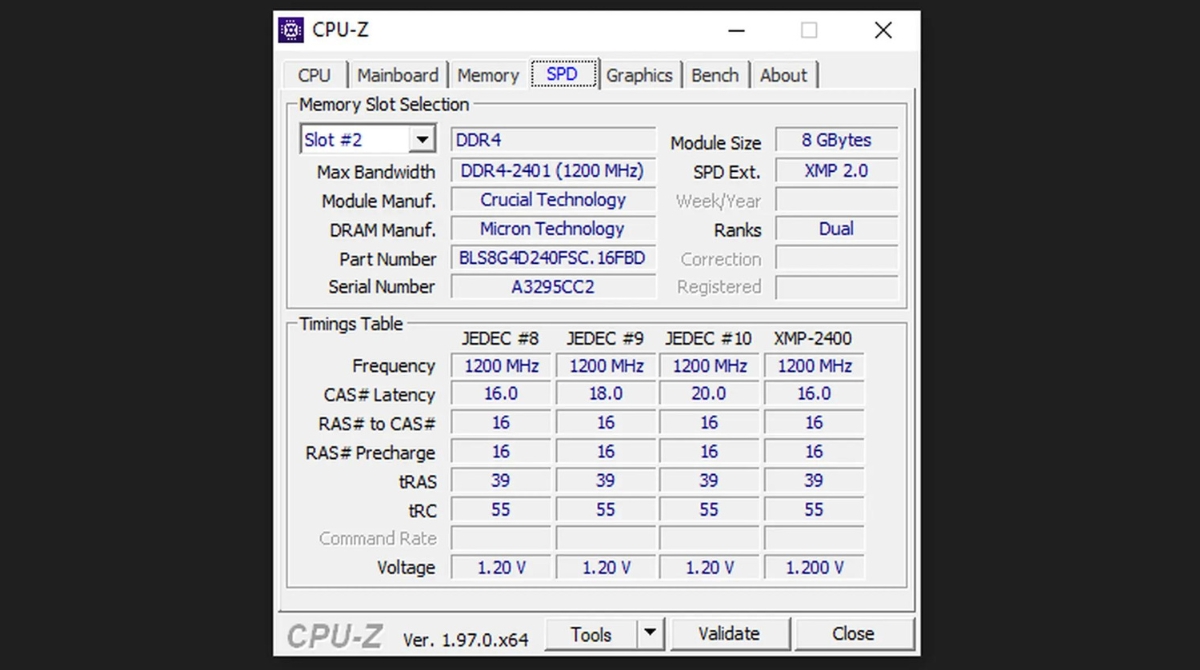Introduction
Welcome to the world of PC building! If you’re new to the DIY computer scene, you might be overwhelmed by the sheer number of components and terminologies associated with building a personal computer. One essential component that often gets overlooked is the PC case form factor.
A PC case form factor refers to the size, shape, and layout of the computer case. It plays a crucial role in determining what types of motherboards, graphics cards, and cooling systems can be installed in the case. Understanding different PC case form factors is essential when selecting the right case for your needs.
In this article, we will delve into the various PC case form factors commonly available in the market. We will explore their characteristics, limitations, and advantages to help you make an informed decision when choosing a PC case for your build.
Whether you’re a gaming enthusiast, a creative professional, or simply a computer hobbyist, knowing what form factor your PC case is will empower you to build a system that meets your requirements and ensures compatibility with other vital components.
Let’s dive into the world of PC case form factors and unravel the mysteries behind each type.
What is a PC case form factor?
A PC case form factor refers to the standardized size and shape of a computer case. It determines the compatibility and fitting of various components, such as the motherboard, power supply, graphics card, and cooling system, within the case. The form factor of a PC case is often denoted by a specific name, such as ATX, micro ATX, mini ITX, E-ATX, or extended ATX.
PC case form factors are crucial because they dictate the size and layout of the internal components, ensuring that all the parts fit properly and function optimally. The form factor of a case also affects the overall size, weight, and portability of the computer system.
By adhering to standardized form factors, manufacturers can ensure that their computer cases are compatible with a wide range of components. This allows for easy upgrades and interchangeability of parts, making it convenient for users to modify and customize their systems according to their needs.
Furthermore, PC case form factors also influence the number and types of expansion slots available, as well as the cooling and airflow options within the case. This can significantly impact the overall performance and longevity of the computer.
Overall, the PC case form factor serves as a foundation for building a reliable, functional, and aesthetically pleasing computer system. It provides the necessary guidelines for selecting compatible components and ensures that the system operates optimally without any restrictions or limitations.
Different PC Case Form Factors
There are several different PC case form factors available in the market, each with its own unique characteristics and specifications. Let’s take a closer look at some of the most common ones:
ATX Form Factor: The ATX (Advanced Technology eXtended) form factor is one of the most popular and widely used standards for PC cases. It offers a good balance between size, expandability, and compatibility. ATX cases typically have multiple expansion slots, allowing for the installation of larger motherboards and multiple graphics cards. They also tend to have ample cooling options and storage capacity.
Micro ATX Form Factor: The Micro ATX form factor is a smaller version of the ATX standard. It offers similar functionality but in a more compact size. Micro ATX cases are suitable for users who want a smaller, space-saving build without sacrificing too much in terms of expandability. They often have fewer expansion slots and may support smaller motherboards.
Mini ITX Form Factor: The Mini ITX form factor is the smallest standard form factor for PC cases. It is designed for ultra-compact builds and is ideal for users who prioritize portability and space efficiency. Mini ITX cases can accommodate mini ITX motherboards and have limited space for expansion slots and components. Despite their small size, they can still support high-performance hardware.
E-ATX Form Factor: The E-ATX (Extended ATX) form factor is an extended version of the ATX standard. E-ATX cases are larger and offer more expansion options compared to standard ATX cases. They are suitable for users who require multiple graphics cards, additional storage drives, or advanced cooling solutions. E-ATX cases may require specific E-ATX motherboards to take full advantage of their expanded features.
Extended ATX Form Factor: The Extended ATX form factor is even larger than the E-ATX standard. These cases are designed for extreme PC builds that require extensive hardware configurations or custom water cooling setups. Extended ATX cases offer abundant space for multiple graphics cards, large power supplies, and ample cooling options. They are typically used by enthusiasts and professionals seeking maximum performance and customization.
By understanding the different PC case form factors, you can select the one that best suits your needs, whether you prioritize expandability, compactness, or extreme customization. Consider factors such as the size of your motherboard, the number of expansion cards you plan to use, the cooling requirements, and the overall aesthetic appeal of the case. Making an informed decision will ensure a seamless and hassle-free building process for your PC.
ATX Form Factor
The ATX (Advanced Technology eXtended) form factor is one of the most popular and widely used standards for PC cases. It was introduced by Intel in the mid-1990s and has since become the industry standard for desktop computer cases.
ATX cases are known for their versatility and wide range of compatibility options. They typically have multiple expansion slots, allowing for the installation of larger motherboards and multiple graphics cards. ATX cases also tend to offer ample space for storage drives and cooling solutions.
One of the main advantages of ATX cases is their expandability. With multiple expansion slots, users have the flexibility to add additional components, such as sound cards, Wi-Fi adapters, or additional storage devices. This makes ATX cases an excellent choice for gamers and multimedia enthusiasts who require high-performance systems with extensive customization options.
ATX cases also tend to have better cooling options compared to smaller form factors. They offer more room for larger fans or liquid cooling solutions, allowing for improved airflow and heat dissipation. This is particularly important for users who engage in heavy gaming or intensive tasks that generate a lot of heat.
Another benefit of ATX cases is their compatibility with a wide range of motherboards. ATX motherboards are widely available and offer a plethora of features and connectivity options. They can support high-end processors, multiple RAM slots, ample expansion slots, and various input/output ports. Whether you’re building a gaming rig or a workstation, ATX cases provide the necessary space and features to accommodate a diverse range of motherboard options.
Despite their advantages, it’s important to note that ATX cases tend to be larger than other form factors, which could limit their portability. Additionally, smaller motherboards, such as micro ATX or mini ITX, may have compatibility issues with larger ATX cases. Therefore, it’s crucial to ensure that the motherboard form factor matches the case form factor to avoid any compatibility issues.
In summary, the ATX form factor is the go-to choice for many PC builders due to its versatility, expandability, and compatibility. Whether you’re a gaming enthusiast, a multimedia professional, or a DIY computer hobbyist, ATX cases offer the necessary space and features to build a high-performance system that meets your specific needs and requirements.
Micro ATX Form Factor
The Micro ATX (mATX) form factor is a smaller version of the popular ATX standard. It was developed by Intel as a more compact solution for users who want a smaller, space-saving build without sacrificing too much in terms of expandability.
Micro ATX cases offer a balance between size and functionality. While they may have fewer expansion slots compared to ATX cases, they still provide ample room for various components and customization options. This makes them a popular choice for users who want a versatile system that doesn’t take up too much space.
The primary advantage of Micro ATX cases is their compatibility with both Micro ATX and ATX motherboards. This gives users the flexibility to choose from a wide range of motherboard options based on their specific needs and budget. Micro ATX motherboards are smaller in size, but they still offer a good number of expansion slots, allowing users to add additional components such as graphics cards or sound cards.
Micro ATX cases are often preferred for budget-friendly builds or compact setups. They are great for mid-range gaming rigs, home theater PCs, or office workstations. Their smaller size also makes them more portable compared to full-sized ATX cases, making it easier to transport or move the system if needed.
While Micro ATX cases may have slightly limited space for cooling options, modern designs still offer adequate airflow and ventilation to keep the components running cool. With the right choice of fans or liquid cooling setups, users can maintain optimal temperatures for their system, even in more compact cases.
It’s important to note that compatibility is key when building in a Micro ATX case. Users should ensure that their chosen components, such as the power supply, graphics card, and CPU cooler, are compatible with the case’s dimensions and limitations. It’s also essential to consider cable management in smaller cases to optimize airflow and maintain a clean and organized build.
In summary, the Micro ATX form factor provides a middle ground between compactness and functionality. It offers versatility in terms of motherboard compatibility, allowing users to build systems that don’t compromise on performance while saving space. Whether you’re looking to build a budget-friendly gaming rig or a compact multimedia system, Micro ATX cases provide the necessary features for a satisfying and efficient build.
Mini ITX Form Factor
The Mini ITX form factor is the smallest standardized form factor for PC cases. It was introduced by VIA Technologies in 2001 and has gained popularity for its compact size and portability.
Mini ITX cases are designed to minimize the footprint of the system, making them ideal for users who prioritize space efficiency or require a portable computer. Despite their small size, Mini ITX cases can still accommodate high-performance hardware and deliver impressive performance.
One of the main advantages of Mini ITX cases is their compactness. They are significantly smaller than ATX and Micro ATX cases, allowing users to build sleek and minimalist systems. This makes Mini ITX cases suitable for small spaces, such as dorm rooms, offices, or living rooms where a larger case may be impractical or visually intrusive.
While they may have limited space for expansion slots and storage, Mini ITX cases make up for it with their versatility and efficiency. They can still support powerful processors, high-end graphics cards, and multiple storage drives, making them suitable for gaming, media streaming, or home theater setups.
The compact size of Mini ITX cases also makes them highly portable. They are easy to transport, whether you need to take your system to a LAN party or simply move it around your house. Their lightweight and small form factor make them a convenient choice for those who require a portable computer system.
It’s worth noting that building in a Mini ITX case can be a bit more challenging than with larger form factors. Due to the limited space, cable management and component placement require careful consideration. However, modern Mini ITX cases often come with clever design features, such as modular layouts and smart cable routing options, to facilitate a clean and organized build.
In terms of cooling, Mini ITX cases may have fewer fan slots compared to larger cases. However, with efficient airflow design and the use of compact yet powerful coolers or liquid cooling solutions, users can still maintain optimal temperatures for their components.
Despite their compact size, Mini ITX cases offer extensive compatibility with a variety of Mini ITX motherboards. These boards provide a range of connectivity options, including USB ports, audio jacks, and expansion slots, allowing for a versatile and functional system.
In summary, the Mini ITX form factor offers a compact and portable solution for users seeking a smaller footprint without compromising on performance. Whether you’re building a small gaming rig, a media center, or a system for on-the-go productivity, Mini ITX cases provide a space-efficient and versatile foundation for your PC build.
E-ATX Form Factor
The E-ATX (Extended ATX) form factor is an extended version of the ATX standard, designed to accommodate larger and more powerful computer systems. E-ATX cases offer even more space and flexibility than standard ATX cases, making them popular among enthusiasts and professionals who require extensive hardware configurations.
One of the main advantages of E-ATX cases is their generous amount of interior space. They provide ample room for multiple expansion slots, larger motherboards, and additional components. This makes E-ATX cases suitable for users who need to install multiple graphics cards, sound cards, or other expansion cards for specialized purposes like video editing, 3D rendering, or high-end gaming.
E-ATX cases also excel in terms of cooling options. With the additional space, users can install larger fans, radiators, or other advanced cooling solutions to keep their system running at optimal temperatures. This is especially crucial for PCs that run intensive tasks, generate a lot of heat, or utilize overclocking for maximum performance.
Another advantage of E-ATX cases is the potential for enhanced storage capacity. With their larger size, they provide ample room for multiple hard drives or solid-state drives, allowing users to create large storage arrays for data-intensive applications or massive media libraries.
It’s important to note that due to their increased dimensions, E-ATX cases require specific E-ATX motherboards. These motherboards are larger than standard ATX boards, offering more expansion slots and additional features. Building in an E-ATX case requires careful planning and attention to ensure that the case and motherboard are compatible and that all the components fit properly.
While E-ATX cases offer numerous benefits, it’s important to consider the size and weight of these cases. Their large form factor can make them less portable and suitable primarily for stationary systems. Additionally, their size may also impact the available space in your workspace or gaming setup, so it’s important to ensure you have enough space to accommodate them.
In summary, the E-ATX form factor provides a spacious and versatile solution for users who need extensive hardware configurations and advanced cooling options. Whether you’re a professional content creator, a hardcore gamer, or an enthusiast who demands the utmost performance from your system, E-ATX cases offer the room and flexibility to bring your vision to life.
Extended ATX Form Factor
The Extended ATX (E-ATX) form factor is an even larger version of the ATX standard, designed for extreme PC builds that require extensive hardware configurations or custom water cooling setups. E-ATX cases provide an abundance of space and flexibility, making them a popular choice among enthusiasts and professionals seeking maximum performance and customization.
One of the significant advantages of E-ATX cases is their vast interior space. They offer even more room than standard ATX or E-ATX cases, allowing for the installation of multiple graphics cards, additional storage drives, and other expansion components. This makes them ideal for users who require the utmost performance for tasks such as high-end gaming, 3D rendering, or professional video editing.
With their larger dimensions, E-ATX cases also excel in terms of cooling options. They can accommodate multiple large fans, extensive liquid cooling systems, and radiators, ensuring efficient heat dissipation and maintaining optimal temperatures even under heavy workloads. This is especially important for users who engage in overclocking or run intensive applications that generate a lot of heat.
In addition to their spacious interiors and advanced cooling capabilities, E-ATX cases often offer enhanced cable management features. These include dedicated cable routing channels, ample tie-down points, and hidden compartments for a cleaner and more organized build. This not only improves the aesthetics but also helps with airflow and maintenance.
It’s worth noting that building in an E-ATX case requires specific E-ATX motherboards. These motherboards are typically larger than standard ATX or E-ATX motherboards, offering more expansion slots, advanced power delivery, and additional connectivity options. It’s crucial to ensure compatibility and proper fitment by carefully selecting the compatible motherboard for your chosen E-ATX case.
Due to their larger size, E-ATX cases may be less portable and more suitable for stationary systems. They also require a sufficient amount of desk or floor space for installation. It’s important to consider the dimensions of the case and ensure that you have enough room in your workspace or gaming setup before opting for an E-ATX form factor.
In summary, the Extended ATX form factor provides an unparalleled level of space and flexibility for extreme PC builds. Whether you’re a professional content creator, a dedicated gamer, or an enthusiast who wants the most customization options, E-ATX cases allow you to unleash the full potential of your high-performance system.
Choosing the Right PC Case Form Factor
When it comes to selecting the right PC case form factor, it’s essential to consider your specific needs, preferences, and the intended purpose of your build. Each form factor offers its own advantages and limitations. Here are some factors to consider when making your decision:
Component Compatibility: Ensure compatibility between the chosen form factor and the components you plan to use, such as the motherboard, graphics card, and cooling system. Ensure that the case can accommodate the size and design of your chosen components without issues.
Space and Portability: Consider the available space in your workspace or gaming setup. If you have limited space or require portability, smaller form factors like Micro ATX or Mini ITX may be more suitable. On the other hand, if space is not an issue, larger form factors like ATX, E-ATX, or Extended ATX offer more expansion options.
Expansion Needs: Determine the number of expansion slots or storage drives you require. If you plan to install multiple graphics cards, sound cards, or additional components, larger form factors like ATX, E-ATX, or Extended ATX provide more expansion possibilities.
Cooling and Airflow: Consider your cooling requirements. If you anticipate running intensive tasks or overclocking, you may need a form factor that allows for larger fans or liquid cooling solutions. Larger form factors generally offer better cooling options due to their increased space for ventilation.
Aesthetics and Customization: Consider the visual appeal and customization options offered by different form factors. If you prioritize a sleek and compact build, smaller form factors like Mini ITX may be more suitable. However, if you enjoy the ability to showcase your hardware or incorporate custom water cooling loops, larger form factors like ATX, E-ATX, or Extended ATX may offer more opportunities.
Ultimately, choosing the right PC case form factor depends on your individual needs and preferences. Assess the specific requirements of your build, such as component compatibility, space limitations, expansion needs, cooling demands, and aesthetic preferences. By considering these factors, you can select the form factor that best suits your needs and allows you to build a high-performance system that meets your requirements.
Conclusion
Selecting the right PC case form factor is a crucial step in building a computer system that meets your needs and preferences. Whether you opt for the compactness of Mini ITX, the versatility of Micro ATX, the expandability of ATX, or the power of E-ATX or Extended ATX, each form factor offers its own advantages.
Consider factors such as compatibility with your chosen components, available space in your setup, expansion needs, cooling requirements, and desired aesthetics. By understanding the characteristics, limitations, and benefits of each form factor, you can make an informed decision that results in a well-designed and optimized system.
Remember that form factor is just one aspect of selecting a PC case. Additional factors such as build quality, cable management, drive bays, and I/O ports also contribute to the overall functionality and user experience.
Take the time to research and compare different case options, read customer reviews, and consult with experienced builders or professionals if needed. With proper consideration and planning, you can choose a PC case form factor that sets the foundation for a successful and satisfying build.
So, take the plunge, immerse yourself in the world of PC cases, and embark on the journey of building a personalized, powerful, and visually stunning computer system.
















![Is The Razer Pro Type Ultra A Gamechanger? [REVIEW]](https://robots.net/wp-content/uploads/2022/06/razer-pro-type-ultra-featured-2-300x175.jpg)








